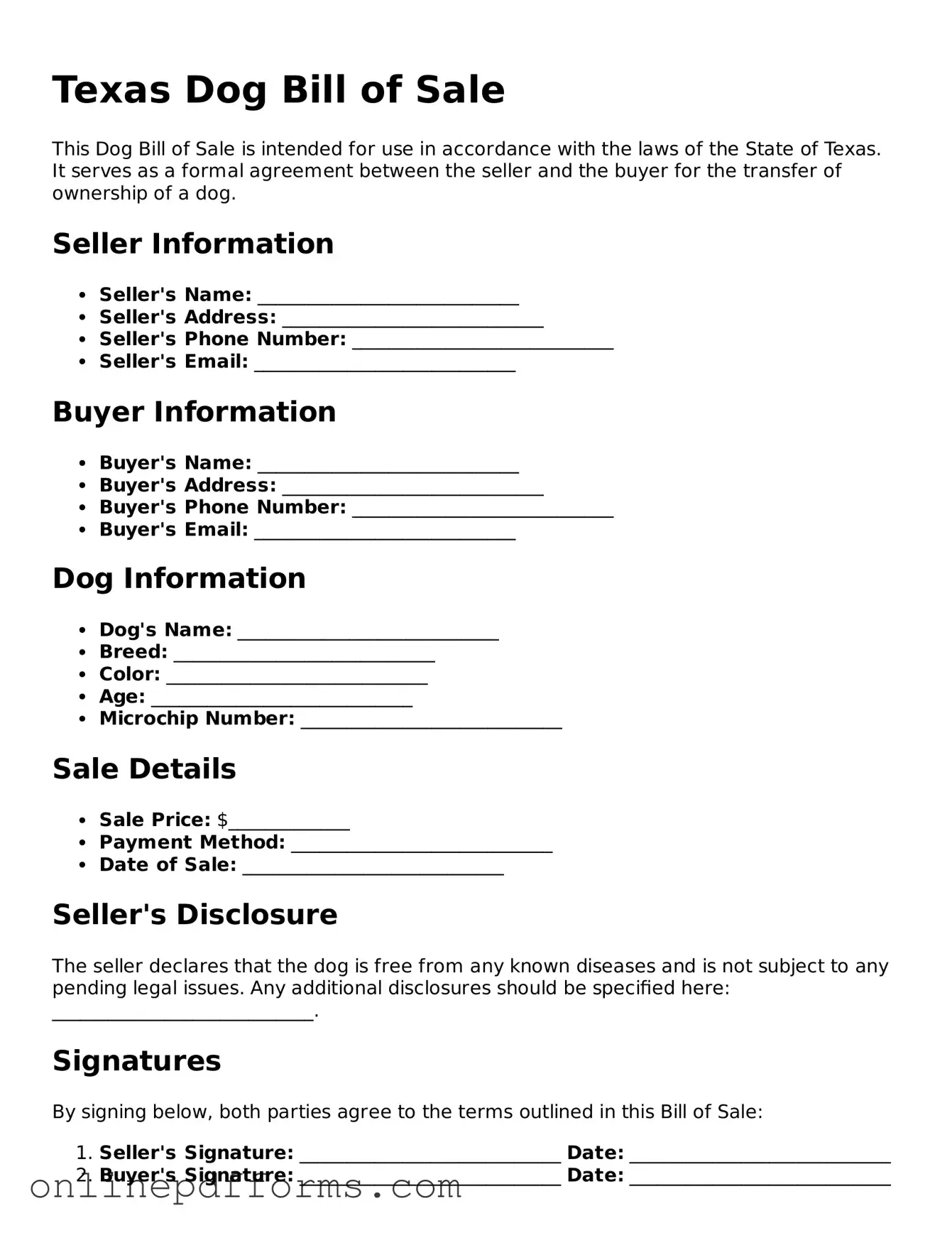The Texas Dog Bill of Sale form shares similarities with the general Bill of Sale, which is a document used to transfer ownership of various types of personal property. This document typically includes details about the buyer and seller, a description of the item being sold, and the terms of the sale. Like the Dog Bill of Sale, a general Bill of Sale serves as proof of the transaction and can protect both parties by clearly outlining the terms agreed upon. It is essential for establishing legal ownership, whether for a vehicle, furniture, or, in this case, a dog.
Another document akin to the Dog Bill of Sale is the Pet Adoption Agreement. This agreement is often utilized by shelters and rescue organizations when transferring a pet to a new owner. It outlines the responsibilities of the new owner, including care requirements and potential return policies. Similar to the Dog Bill of Sale, it formalizes the transfer of ownership and emphasizes the importance of responsible pet ownership, ensuring that the new owner understands their obligations.
The Animal Purchase Agreement also bears resemblance to the Dog Bill of Sale. This document is frequently used in commercial transactions involving animals, such as breeding dogs or show animals. It includes details about the animal's pedigree, health guarantees, and any warranties regarding the animal's condition. Like the Dog Bill of Sale, it serves to protect the interests of both the buyer and seller while providing a clear record of the transaction.
The Lease Agreement for Pets is another relevant document. While it primarily governs the terms under which a pet may be kept, it includes provisions that can resemble those found in a Dog Bill of Sale. This agreement outlines the responsibilities of the lessee regarding care and maintenance of the pet, similar to how a Dog Bill of Sale stipulates the care expectations post-purchase. Both documents emphasize the importance of the pet's well-being and the obligations of the caretaker.
For those involved in larger transactions, such as the sale of a Recreational Vehicle, having the correct documentation is crucial; the Auto Bill of Sale Forms serve this purpose by providing a clear record of the RV's sale, ensuring all necessary details are documented to protect both the seller and buyer.
The Veterinary Records Release form can also be compared to the Dog Bill of Sale. This document allows a new owner to access the veterinary history of the animal, ensuring they are aware of any medical conditions or treatments. While the Dog Bill of Sale transfers ownership, the Veterinary Records Release ensures continuity of care, highlighting the importance of informed decision-making in pet ownership.
Lastly, the Microchip Registration form is similar in that it involves the identification and ownership of a pet. When a dog is sold, the microchip is often transferred to the new owner's name to ensure that the pet can be identified if lost. This document complements the Dog Bill of Sale by providing a method for tracking ownership and ensuring that the pet can be returned to its rightful owner, reinforcing the responsibility that comes with pet ownership.
